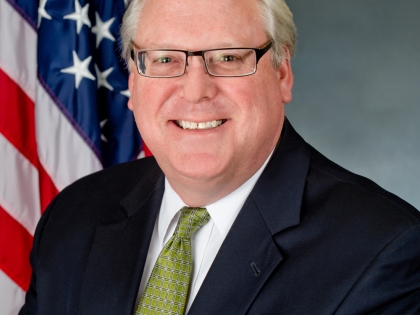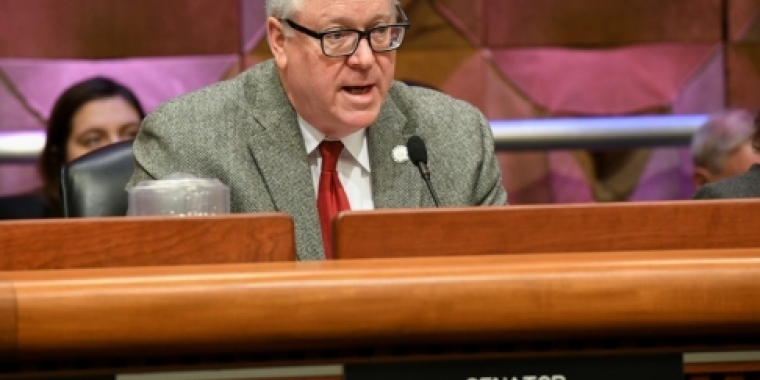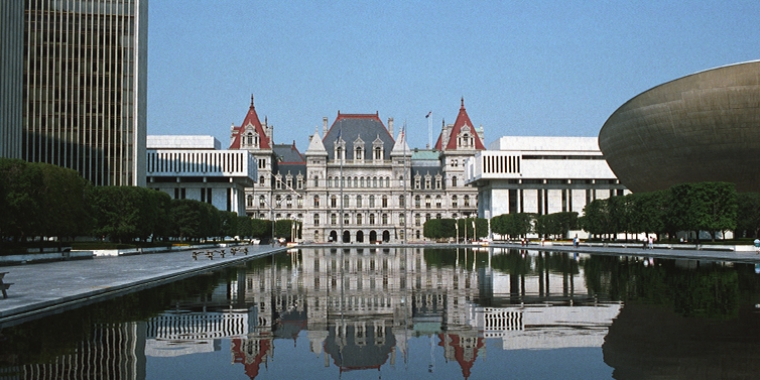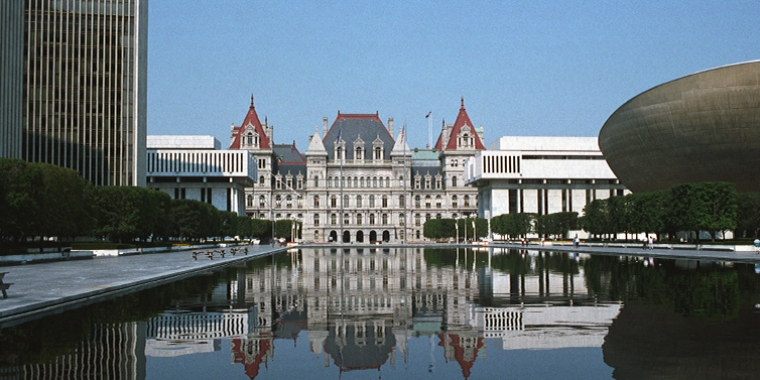
O’Mara: Hochul finally admits New Yorkers will pay a heavy price under current clean energy mandates
April 5, 2023
-
ISSUE:
- clean energy mandates

Albany, N.Y., April 5—State Senator Tom O’Mara (R,C-Big Flats), a longstanding and frequent critic of the push by Albany Democrats to implement what he and many others view as radical and unworkable clean energy mandates, today welcomed new proposals from Governor Kathy Hochul and leading legislative Democrats to revise a key provision of the “Climate Leadership and Community Protection Act” (CLCPA) impacting the program’s cost and timeline for implementation.
“Since the day the CLCPA was enacted four years ago, many of us have warned that Albany Democrats are pushing ahead with a radical plan that ignores the cost to all New Yorkers and to the state and local economies. It has never been accompanied by an honest and straightforward cost-benefit analysis of its affordability, reliability, and sustainability,” said O’Mara, Ranking Member on the Senate Finance Committee. “In recent days, Governor Hochul and some legislative Democrats have admitted to seeing the light. They are finally looking to pump the brakes on what is currently an out-of-control timeline to implement far-reaching energy mandates that New Yorkers don’t want, can’t afford, and, most importantly, know won’t make a difference for the climate in this state, this nation, or anywhere around the world.”
News reports over the past several days, including an op-ed earlier this week from the Hochul administration’s top energy and environment officials, have focused on the fact that New York is currently one of only two jurisdictions worldwide utilizing an irrational and unfeasible accounting metric as the basis for examining the effect of carbon emissions and determining the timeline for actions to address it. Maryland is the only other state to have enacted a climate law using this metric. All other states, as well as virtually all other nations and countries that have enacted climate strategies, base their actions on a standard, internationally accepted, science-based accounting metric.
O’Mara said, “The CLCPA’s accounting metric makes New York State an outlier around the world. It will have massive consequences, on so many levels, for our consumers, ratepayers, and local economies. Senate and Assembly Republicans have been saying all along that this plan has never been accompanied by the proper cost-benefit analysis, that we’re moving too fast to implement the CLCPA and it won’t be feasible, affordable, or reliable. It appears that Governor Hochul and some Albany Democrats finally agree, however the pushback is already underway and so let’s hope it’s not too late for common sense to regain a foothold in this government.”
Earlier this year, the state’s Climate Action Council (CAC) voted to approve its final draft plan to implement the nation’s most aggressive set of short- and long-term renewable energy mandates. The council was created under the CLCPA, enacted in 2019 by then-Governor Andrew Cuomo and the Legislature’s Democrat majorities. When she took the reins after Cuomo resigned, O’Mara said that Hochul continued full speed ahead on this radical remaking of energy policy.
Among many recommendations, the CAC’s plan currently calls for:
- No natural gas within newly constructed buildings, beginning in 2025;
- No new gas service to existing buildings, beginning in 2030;
- No replacement natural gas appliances for home heating, cooking, water heating, clothes drying beginning in 2035; and
- No gasoline-automobile sales by 2035.
In an opinion article published earlier this week by the USA Today Network, the co-chairs of New York’s CAC, Basil Seggos, Commissioner of the state Department of Environmental Conservation, and Doreen Harris, President and CEO of the NYS Energy Research and Development Authority, signaled the change in the administration’s thinking.
“When the Climate Leadership and Community Protection Act was passed in 2019, it included a way of counting New York’s emissions that differs from the scientific standard used by nearly every other state and country in the world. In addition, no cost analysis was completed at that time, and as we all know, the economic landscape has changed dramatically since 2019,” Seggos and Harris wrote. “The reality is that we are advancing this transformation to fight climate change at a time in which many New Yorkers are struggling financially and economically. Now, under Hochul's direction, we are taking a close look at consumer cost impacts to ensure we will reach our climate goals while protecting New Yorkers. As it stands today, the climate act’s emissions accounting method is certain to be a major driver of future costs for New York families.”
In a Capital Tonight interview with Susan Arbetter this week, Seggos also stated that the plan, as currently constructed, will impose extraordinary costs on New Yorkers including causing home heating costs to increase by 80% and gasoline prices to rise by 62 cents per gallon. Recognizing this, the chairs of the Senate and Assembly Energy Committees introduced legislation ( S.6030/A.6039) last week that, if enacted, would make the change to the more internationally accepted accounting metric.
O’Mara said, “Governor Hochul’s ambition to impose far-reaching clean energy mandates on all New Yorkers kept moving forward right along with her administration’s unwillingness to explain how much it will cost or how the state intends to pay for it. Consumers had no idea what’s coming. Despite the repeated claims of the governor and her administration, the plan was never accompanied by any cost-benefit analysis of the impact of these actions on energy affordability, reliability, or sustainability.
“I have joined legislative colleagues and many others over the past several years to sound the alarm, particularly over how these irrational and unsustainable mandates will come at great costs and consequences. Far too many New Yorkers have remained in the dark about these potential costs and consequences, largely because Governor Hochul and her clean energy czars either didn’t truly know or really didn’t want to shine any light on it. Now they’re suddenly looking to change course?
“Many of us in the Senate and Assembly Republican conferences have steadfastly highlighted the plan’s extreme efforts to eliminate reliable, affordable sources of energy that are vital for the citizens and communities we represent. We have also fully encouraged New York’s past efforts to increase cleaner and renewable power, efforts that have been astoundingly successful. New York State is already a national and worldwide leader accounting for just 0.4% of global carbon emissions.
“New York State consumes less total energy per capita than all but two other states. New York State’s per capita energy consumption for the transportation sector is the lowest in the nation. In 2020, New York State’s per capita energy-related carbon dioxide emissions were lower than those of any other state. However, New York State's CO² emissions have since increased about 24% due to the closing of the Indian Point nuclear electricity generating plant - another glaring example of the lack of foresight and rationality in New York's energy plan.
“Nevertheless, New York’s ongoing leap into the energy unknown will have no impact on the actions of neighboring states or, even more critically, on China, India, or Russia, which account for 40% of global emissions. In other words, even if New York State does reach zero emissions, there will be zero impact on our own climate or the global climate at large, yet all New Yorkers will pay a heavy, heavy price.
“While I believe New York State should continue to be a leader on reducing emissions, it remains important to keep sounding the alarm that the state’s strategy as it stands is not realistic or achievable, and unreasonably risks energy grid reliability and affordability. We’re glad to finally have Governor Hochul and some legislative Democrats recognizing the reality of what’s ahead for all New Yorkers if we stay on this course.
“It remains important for more citizens, communities, businesses, families, and workers to fully understand where New York’s energy future is headed and to demand a desperately needed rethinking and slowing down of this process.”
Share this Article or Press Release
Newsroom
Go to Newsroom


